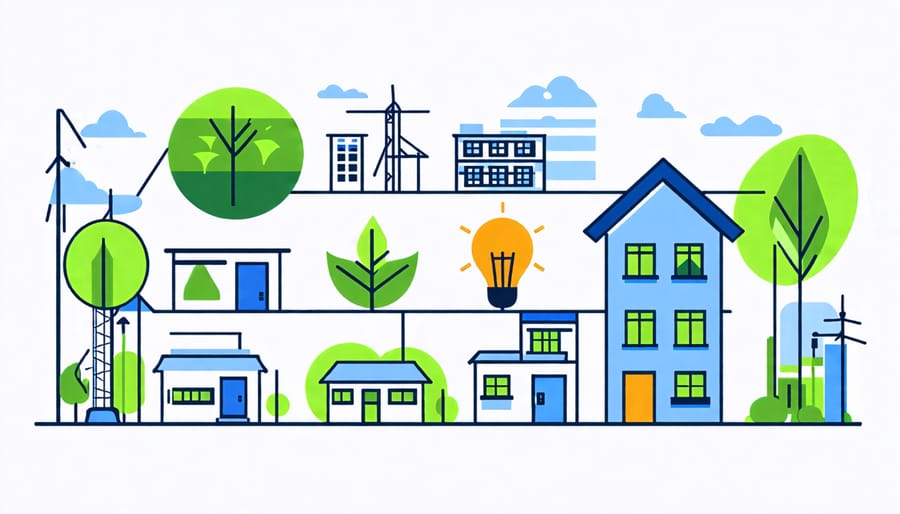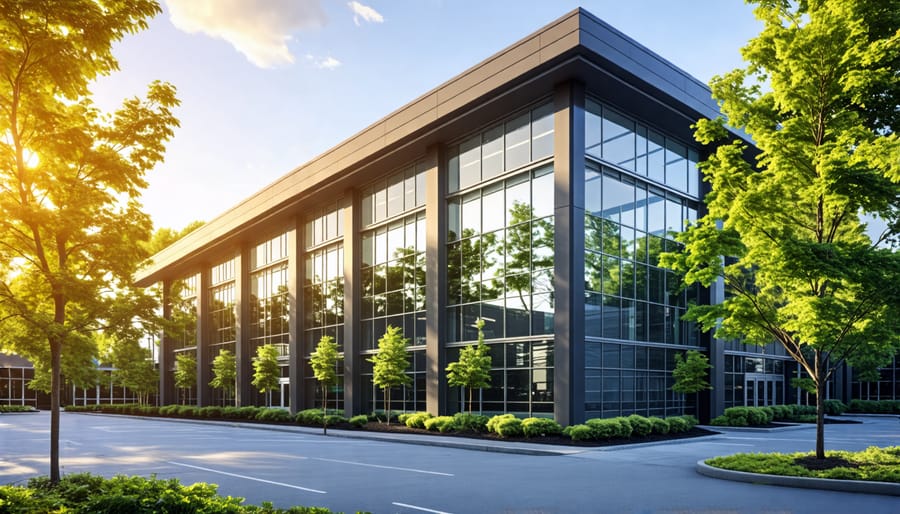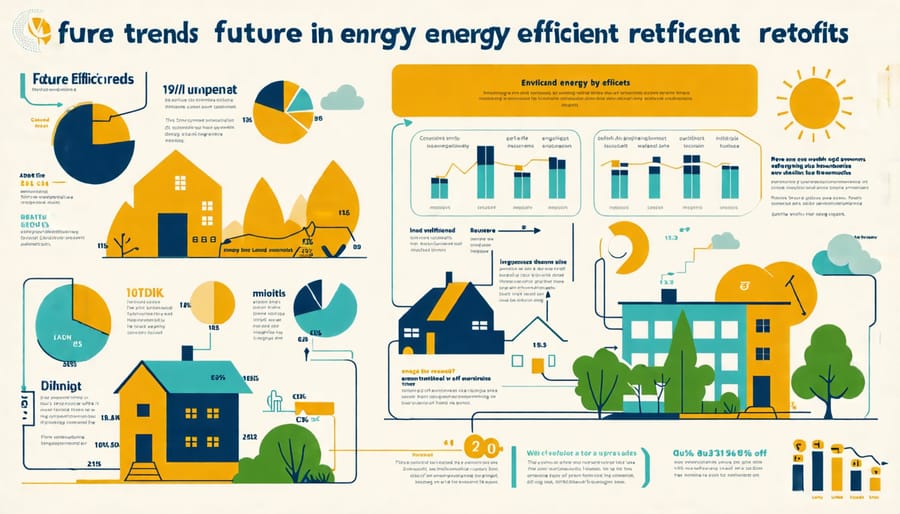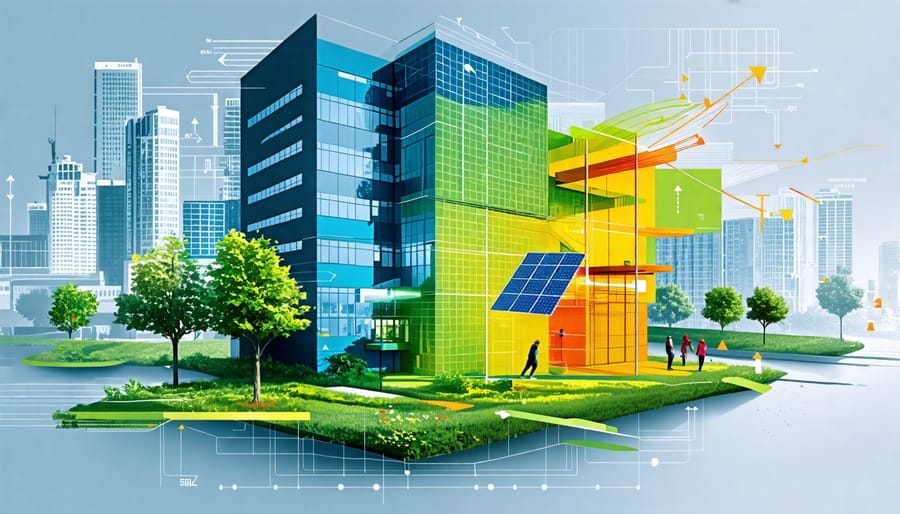Conduct an energy audit to identify areas where energy is being wasted and prioritize improvements. Upgrade insulation in walls, ceilings, and floors to mitigate heat loss and improve temperature regulation. Install high-efficiency HVAC systems and intelligent thermostats to optimize heating and cooling performance, reducing energy consumption. Replace traditional lighting with LED fixtures to decrease electricity use while maintaining optimal illumination.
Understanding Energy Efficient Retrofits
What Are Energy Efficient Retrofits?
Energy-efficient retrofits refer to the process of updating existing buildings with technologies and measures designed to reduce energy consumption and improve overall efficiency. Key components include upgrading insulation, installing high-efficiency HVAC systems, and incorporating advanced lighting solutions such as LED technology. By adopting these practices, construction professionals can significantly enhance the sustainability of older structures. Engaging in energy-efficient retrofits not only reduces operating costs but also contributes to environmental conservation, making them a compelling choice for industry decision-makers. Understanding the intricacies of these retrofits is crucial for architects and engineers aiming to maximize building performance.
Types of Retrofitting Techniques
Retrofitting for energy efficiency involves several key techniques that construction professionals, architects, and engineers should consider. One fundamental approach is enhancing insulation, which reduces heat loss and improves energy conservation by using advanced materials like spray foam or rigid panel insulation. Window replacement is another effective method, often involving the installation of double or triple-glazed windows, minimizing heat transfer and enhancing thermal comfort. Upgrading HVAC systems is crucial, as it optimizes energy consumption and improves indoor air quality by integrating smart thermostats and energy-efficient heat pumps. Furthermore, incorporating renewable energy sources, such as solar panels, offers sustainable alternatives to traditional power, potentially reducing buildings’ carbon footprints significantly. Each of these techniques not only enhances energy efficiency but also contributes to cost savings and environmental sustainability, aligning with modern construction standards and client expectations. Leveraging these strategies can position industry decision-makers at the forefront of sustainable building practices.

Benefits and Challenges
Key Benefits
Energy efficient retrofits offer a myriad of benefits that are vital to the construction industry, particularly for decision-makers and architects aiming to enhance building performance. Environmentally, these retrofits significantly reduce carbon footprints by optimizing energy use, contributing to sustainability goals and regulatory compliance. Financially, the cost savings from reduced energy consumption can be substantial, offering a high return on investment over time. Energy efficient retrofits also increase property value and can qualify for various incentives and rebates, easing the financial burden on stakeholders. From an operational perspective, retrofitting improves the comfort and health of building occupants by enhancing indoor air quality and creating a more consistent indoor environment. This can lead to increased productivity and satisfaction among users. Collectively, these benefits underscore the imperative of adopting energy efficient retrofits, aligning environmental stewardship with economic and operational efficiencies in the ever-evolving construction landscape.
Challenges and Considerations
Retrofitting buildings for energy efficiency is fraught with challenges that professionals must navigate to ensure project success. One significant challenge is the assessment of existing building conditions. A thorough analysis is crucial to determine which energy-saving measures are most effective. Employing advanced diagnostic tools and skilled personnel can mitigate this obstacle. Additionally, balancing initial costs with long-term savings is challenging. While upfront expenses can be daunting, focusing on solutions like DIY solar power can provide cost-effective energy solutions and substantial long-term savings.
Another challenge is meeting the diverse needs of stakeholders, including building occupants, owners, and public interest. Engaging these groups early through transparent communication and expert consultations can streamline decisions and align objectives. Furthermore, regulatory hurdles, often complex and region-specific, may inhibit progress. Staying informed about local policies and engaging with regulatory bodies early in the planning process is vital. Continuous education and adaptation to emerging technologies also play a critical role in overcoming these challenges, ensuring that retrofits not only improve energy efficiency but also remain compliant and economically viable.
Case Studies: Success Stories in Energy Efficient Retrofits

Case Study 1: Commercial Building Enhancements
In a remarkable demonstration of energy-efficient retrofitting, the GreenTech office complex underwent a comprehensive renovation that yielded a 40% reduction in energy consumption. Collaborating with experts in sustainable architecture and engineering, the project team focused on integrating high-impact solutions tailored to the building’s unique characteristics. Initially constructed in the 1980s, the complex was notorious for its inefficiencies, with aging HVAC systems and poor insulation at the root of its problems.
To address these issues, the team embarked on a multi-faceted approach that included the installation of a high-performance HVAC system, advanced glazing technology, and enhanced insulation materials. By incorporating energy recovery ventilators and utilizing daylighting strategies, they not only improved energy efficiency but also enhanced the workplace environment. An expert interview highlighted the importance of real-time energy monitoring systems, which were implemented to allow continuous assessment and adjustment of energy use patterns.
Moreover, the retrofitting significantly reduced operational costs, achieving a payback period well within five years. This case study exemplifies how strategic retrofitting can transform older structures into high-efficiency landmarks, setting new benchmarks in sustainable commercial building practices for construction professionals and industry decision-makers.
Case Study 2: Residential Transformations
A remarkable example of an impactful residential transformation is the retrofit of a mid-century home in Seattle. Originally built in the 1960s, the home was thoroughly updated to set a benchmark for energy efficiency. The project, led by a team of architects and engineers, included substantial enhancements to the building envelope and mechanical systems. High-performing insulation was added to the walls and roof, more than doubling the original thermal value. The installation of triple-glazed windows further minimized heat loss while maintaining indoor comfort.
Through advanced modeling, the team identified optimal locations for LED lighting and energy-efficient appliances, which cut energy consumption by over 40%. The integration of a ground-source heat pump provided sustainable heating and cooling, replacing the inefficient furnace. The retrofit also incorporated smart home technologies that allowed occupants to monitor and control energy use in real-time, solidifying further savings.
This case illustrates the synergy of modern technology and innovative design in reducing residential energy demand. The Seattle project’s success not only resulted in significant energy savings but also enhanced the home’s market value, offering a blueprint for future retrofits.
Future Trends in Energy Efficient Retrofits

Advancements in Technology
The landscape of energy-efficient retrofits is rapidly evolving thanks to innovative technologies that enhance both efficiency and cost-effectiveness. Notable advancements include smart building systems, which integrate IoT sensors and real-time data analytics to optimize energy consumption and dynamically manage lighting, HVAC, and other critical systems. High-performance insulation materials, like aerogels, provide superior thermal resistance, reducing energy costs substantially. Moreover, advancements in solar technology, such as bifacial solar panels, are doubling energy capture, further driving down operational expenses. Prefabricated retrofit solutions are streamlining installations, minimizing disruptions, and reducing labor costs. These technological strides not only promise efficiency but align with future technology trends shaping the industry, ensuring that retrofits are not only viable today but also resilient for tomorrow. Construction professionals are thereby equipped with tools that facilitate sustainable and economically sound projects.
Policy and Regulatory Developments
Recent regulatory shifts are significantly affecting energy-efficient retrofit projects, shaping their design and implementation. Updated building codes and standards increasingly emphasize sustainability and energy conservation, requiring construction professionals to integrate advanced technologies and materials into their plans. For instance, regulations such as stricter energy performance benchmarks and mandatory use of renewable energy systems in upgraded structures are becoming prevalent. These changes drive innovation, encouraging architects and engineers to explore novel solutions that not only meet compliance but also enhance building performance. Furthermore, many governments offer incentives, such as tax credits and grants, to support these retrofits, making them more financially viable. Industry experts suggest these developments are propelling a proactive approach within the sector, fostering an environment where sustainable building practices are not just recommended but essential.
Conclusion
As we delve into the future of construction, the importance of energy-efficient retrofits stands out as a crucial element in the evolution of sustainable building practices. Throughout this article, we have examined their significant role in enhancing energy performance and reducing carbon footprints, ultimately leading to both environmental and economic benefits. From expert interviews to in-depth case studies, it’s clear that the integration of advanced technologies and innovative solutions in retrofit projects can drastically improve existing structures.
Energy-efficient retrofits are not merely a trend but a necessity in the face of escalating energy demands and stringent environmental regulations. For construction professionals, architects, and engineers, these retrofits represent an opportunity to lead the charge towards a more sustainable built environment. By implementing strategies such as improved insulation, advanced HVAC systems, and smart building technologies, older buildings can attain modern efficiency standards.
Reflecting on our findings, it’s evident that the adoption of energy-efficient retrofits will not only play a pivotal role in the future of construction but also enhance the longevity and value of building assets. As we move forward, embracing this approach will be key for industry decision-makers aiming to balance economic growth with environmental stewardship, ensuring that both current and future generations benefit from more sustainable infrastructure.

